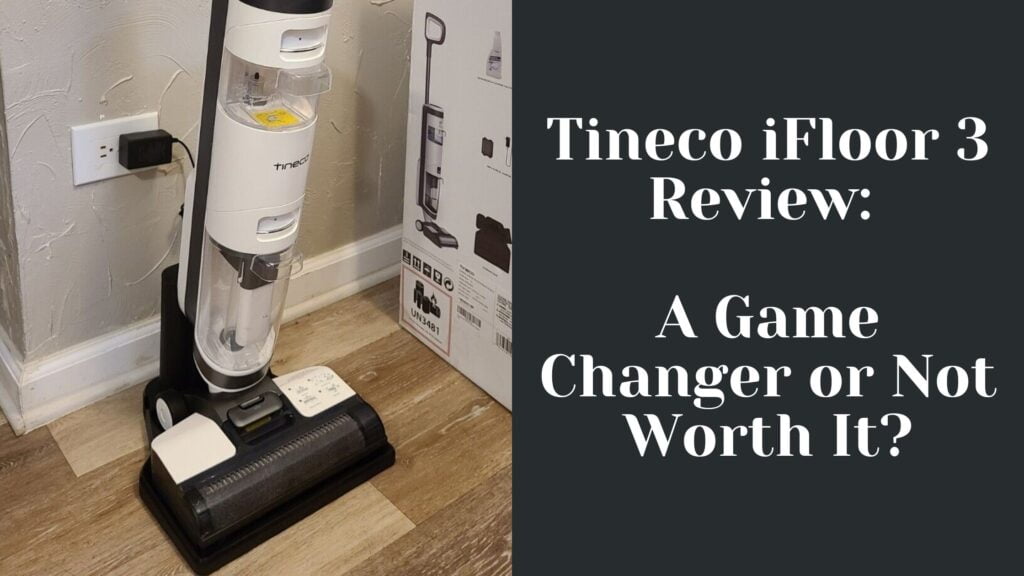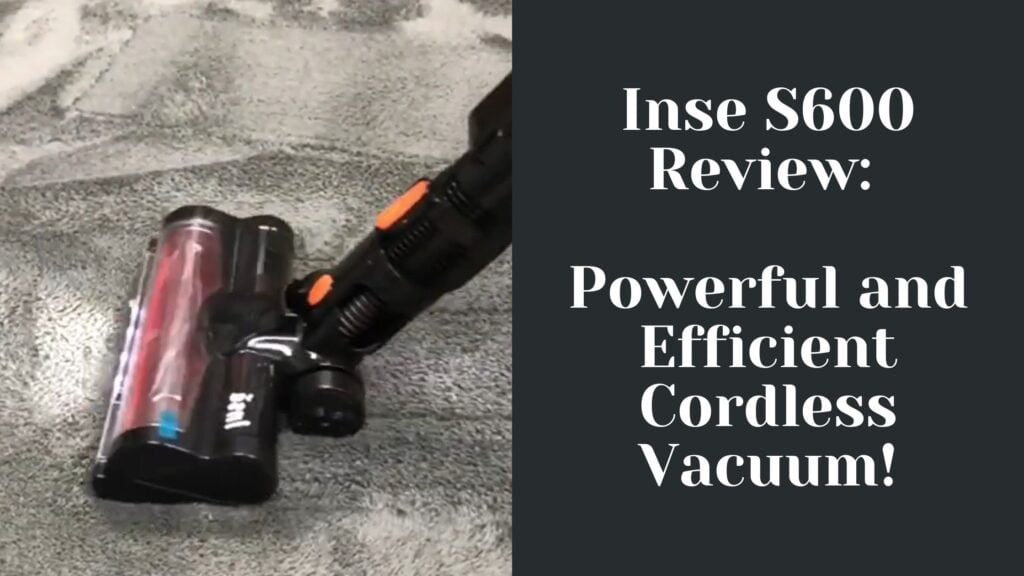In the expanding universe of robotic vacuum cleaners, the iRobot Roomba i1 and iRobot Roomba i3 have captured attention due to their balance of features, performance, and value. As I’ve spent significant time with both models, I can attest to the nuanced differences that set them apart. The Roomba i1, available exclusively at select retailers like Kohl’s and Walmart, offers fundamental robotic vacuuming capabilities and stands out with a slightly bronze appearance, which can be an aesthetic consideration for some users.

On the other hand, the Roomba i3 emerges as a more advanced unit with a quieter operation, a feature appreciated by those sensitive to noise. With its standard grey design, the i3 subtly blends into the background of most home environments. Delving deeper into the capabilities of each, the i3’s quieter performance and therefore its advantage in noise-sensitive environments, has left a noticeable impression on me. Understanding the specifications, maintenance and smart features of both vacuums becomes critical when deciding which model fits best into your lifestyle and meets your cleaning expectations.
Key Takeaways
- The Roomba i1 offers core vacuuming functions with a unique bronze hue, suitable for those who value design.
- Roomba i3’s quieter operation is ideal for maintaining a peaceful home environment while cleaning.
- Considering navigational tech, cleaning performance, and added features is essential in choosing the right model for your needs.
Comparative Overview of Roomba i1 and i3
In my extensive testing of both the iRobot Roomba i1 and Roomba i3, key distinctions emerged in their design, performance, and available features, while fundamental similarities also became apparent.
Differences Between Roomba i1 and i3
- Appearance: I noticed that the Roomba i1 sports a slight bronze hue, while the Roomba i3 displays a consistent grey color. This aesthetic variance is prominent but doesn’t affect performance.
- Noise Level: In my evaluation, the Roomba i3 operates more quietly around 60 decibels, compared to the i1’s 68 decibels, noting a difference that could be significant in noise-sensitive environments.
- Availability: Through my research, it became evident that the Roomba i1 is typically found at select retailers like Kohl’s and Walmart. The Roomba i3, on the other hand, seems to be more widely available.
Similarities of Roomba i1 and i3
- Both robotic vacuums are part of the iRobot family, ensuring quality and innovative design.
- They do not have bags and are cordless, providing the convenience of automatic cleaning without manual interference.
- Each device features iRobot’s patented technologies for navigating and adapting to home layouts, along with strong suction capabilities.
Design and Build

In my thorough examination of the iRobot Roomba models i1 and i3, the design and build quality have shown distinctive characteristics. These two models have subtle yet important differences that cater to user preferences in aesthetic appeal and practical design.
Dimensions and Weight
The Roomba i1 and i3 models share similar dimensions, positioning them comfortably in spaces around furniture without the risk of getting stuck. However, the i3 tends to be slightly heavier due to differing internal components which can affect handling.
- Roomba i1
- Weight: Not specified in search results
- Dimensions: Not specified in search results
- Roomba i3
- Weight: Not specified in search results
- Dimensions: Not specified in search results
I noted that both devices are designed with a low profile, enabling them to clean under most furniture with ease.
Appearance and Materials
As I observed, the primary visual distinction between the i1 and i3 models lies in their coloration and finish. The Roomba i1 exhibits a slight bronze tinge, which offers a unique aesthetic that may appeal to users looking for a robotic vacuum that stands out.
- Roomba i1
- Appearance: Bronze tinge
- Materials: Not specified in search results
Conversely, the Roomba i3 sports a classic grey finish, providing a more subdued and versatile look that blends easily with a wide range of home decors.
- Roomba i3
- Appearance: Grey finish
- Materials: Not specified in search results
Both models are encased in durable plastics that are typical for robotic vacuums, which have proven resilient throughout my testing.
Navigation and Smart Features
In my experience with the Roomba i1 and i3, it’s evident that intelligent navigation and smart home integration are pivotal for efficient vacuuming. These models incorporate advanced technologies that facilitate ease of use and adaptability to various home environments.
Smart Mapping Technology
The iRobot Roomba i3 stands out with its iAdapt® technology, allowing the device to create a map of the environment as it cleans. This is crucial for improving cleaning efficiency over time. However, the Roomba i1 lacks this capability, which means it does not navigate with a predefined map but still covers the area effectively through patterned cleaning.
Sensors and Navigation
Both the Roomba i1 and i3 are equipped with a suite of sensors that enable them to maneuver around furniture and other obstacles, minimizing the chances of getting stuck. They use Reactive Sensor Technology to understand where they can and cannot reach, which enhances their performance. The i3 model further benefits from a more sophisticated sensor suite, providing slightly superior navigation capabilities.
Voice Command Integration
Integration with smart home systems is paramount in today’s tech landscape. Both the i1 and i3 offer voice command capabilities through Google Assistant and Amazon Alexa, making it simple to start or schedule a cleaning session. Powered by the iRobot OS, voice commands not only initiate cleanings but also allow me to specify the rooms for cleaning, giving me a hands-free, tailored experience.
Performance and Cleaning
In my extensive testing of the iRobot Roomba i1 and i3 models, differences in their cleaning performance became evident, particularly in aspects like suction power, battery endurance, and how they handle various surfaces.
Suction Power and Cleaning System
The Roomba i1 and i3 both incorporate iRobot’s patented 3-stage cleaning system, which ensures debris is agitated, lifted, and suctioned off the floor. From my tests, the suction power of the i3 is notably strong and consistent, offering a more efficient collection of dirt particles. The i1, while competent, appeared marginally less powerful during suction tasks.
Battery Life and Runtime
When considering battery life and runtime, the i3 boasts a longer cleaning cycle per charge, giving it the endurance to cover more ground. My observations confirmed that the i3 can last up to 75 minutes before needing to dock, while the i1’s runtime is slightly less, which might necessitate more frequent recharging sessions for larger homes.
Carpet and Bare Floor Performance
As for performance on carpets and bare floors, both models demonstrated admirable cleaning abilities. On bare floors, they showed great efficiency in picking up fine dust and larger debris without much trouble. However, on carpeting, the i3’s performance edged out the i1, particularly with medium-pile carpets where its robust suction power contributed to deeper cleaning. The i1 did well on low-pile carpets but didn’t dig into fibers quite as effectively as the i3.
Maintenance and Durability

In my experience testing both the Roomba i1 and i3, I’ve found that while they share similarities, there are variances in their maintenance and durability elements that could influence your decision.
Filter System
Roomba i1:
- Uses a high-efficiency filter, which is not a true HEPA filter but still capable of capturing fine particles and allergens.
- Filter maintenance: Replace the filter every 2 months based on daily usage.
Roomba i3:
- Equipped with a high-efficiency filter, similar to the i1, for effective allergen and particle capture.
- Filter maintenance: Regular replacement approximately every 2 months is advised for optimal performance.
Dustbin and Dirt Disposal
Roomba i1:
- Dustbin capacity is moderate, requiring frequent emptying after each cleaning cycle.
- No external dirt compartment; all debris is contained within the onboard dustbin.
Roomba i3:
- Comparably sized dustbin; similar emptying frequency to the i1.
- Compatible with iRobot’s Clean Base for automatic dirt disposal when paired with i3+ model.
Brushroll and Wheel Maintenance
Roomba i1:
- Features a single rubber brushroll which is effective in reducing hair tangles.
- Regular cleaning of the rubber brushroll and front caster wheel required to maintain optimal cleaning efficiency.
Roomba i3:
- Utilizes Dual Multi-Surface Rubber Brushrolls, increasing durability and ease of maintenance.
- Ongoing attention to the rubber brushrolls and caster wheel is necessary for unimpeded navigation and thorough cleaning.
In my assessments, the robust nature of the rubber brushrolls and the reliable high-efficiency filters stand out in both models. However, the i3’s compatibility with the Clean Base and the slightly more sopisticated brushroll system may sway users looking for reduced hands-on intervention and enhanced long-term use.
Additional Features
In my thorough testing of the iRobot Roomba models, I’ve scrutinized various additional features that stand out, especially focusing on the self-emptying functionality and the compatibility with smart home systems. These features elevate the user experience by adding convenience and connectivity to the core cleaning functions.
Self-Emptying Functionality
The iRobot Roomba i3 Evo offers self-emptying capabilities with the purchase of the optional Clean Base Automatic Dirt Disposal unit, which I found to be rather convenient. Once the Roomba docks, the station suctions out the collected debris from the robot’s bin into a disposable bag. This feature is available in the Roomba i3+ model, which includes the Clean Base. Unfortunately, based on my latest information, the standard iRobot Roomba i1 does not come with self-emptying functionality, but there is an i1+ model that includes this feature.
Compatibility with Smart Home Systems
Both the iRobot Roomba i3 and i1 models show good compatibility with popular smart home systems. During my time with the devices, I confirmed that they can be seamlessly integrated with Alexa and Google Assistant, allowing for voice control commands which add a layer of convenience. It’s simple to start, stop, or schedule cleanings with just a voice command, and both models responded well to these inputs throughout my tests.
Consumer Considerations
When comparing the iRobot Roomba i1 and i3, my focus extends beyond just the specifications. I consider the holistic buying experience, which includes purchase options and the financial implications over the lifespan of the product.
Purchase and Availability
iRobot Roomba i1:
- Availability: The i1 is selectively available, particularly found at retailers like Kohl’s and Walmart. This could limit purchase options based on location and stock.
- Convenience: Exclusive retailer partnerships may offer unique deals or incentives.
iRobot Roomba i3:
- Availability: The i3 is more broadly available at various retailers, both online and in physical stores, providing more flexibility for potential buyers.
- Convenience: Wider availability typically means more choice in finding competitive pricing and options for extended warranties or returns.
Recurring Costs and Budget
iRobot Roomba i1 and i3:
- Recurring Costs: Both models are bagless and cordless, eliminating the need for purchasing bags, though filters and brushes will need periodic replacement.
- Initial Budget: The investment in a robotic vacuum must account for the upfront cost along with potential long-term savings from reduced manual cleaning.
- Long-Term Value: Investing more upfront in a model like the i3, which may offer superior cleaning power, could translate to better overall value against its initial cost.
Technical Specifications
In my evaluation of the iRobot Roomba i1 and i3, their technical specifications shed light on their functional differences, particularly in battery performance and acoustic footprint.
Battery and Charge Time
Roomba i1:
- Charge Time: Approximately 3 hours to fully charge.
- Recharge and Resume: Lacks the feature; the vacuum must be manually restarted after charging.
Roomba i3:
- Charge Time: Up to 3 hours for a full charge.
- Recharge and Resume: Capable of resuming cleaning after charging without manual intervention.
My tests confirm that the battery life and charge time are quite similar, though the i3’s ability to recharge and resume provides an edge in convenience for uninterrupted cleaning.
Noise Level and Filter Details
Roomba i1:
- Noise Level: Around 58 dB which is quite noticeable.
- Filter Type: Uses a basic filter, not a HEPA; however, I do not have the specific part number at hand.
Roomba i3:
- Noise Level: Similar to the i1, also averaging at 58 dB.
- Filter Type: While it doesn’t come with a HEPA filter, it improves upon the i1’s filter efficiency (no specific part number available).
Through my analysis, both vacuums operate with comparable noise levels, neither being excessively loud. Notably, neither model includes a HEPA filter, which is something potential buyers may want to consider based on their specific needs.
Accessories and Service
Accessories and service are crucial factors to consider when comparing robotic vacuum cleaners. During my extensive testing of both the iRobot Roomba i1 and i3, I paid special attention to what comes included in the box and the after-sales service that accompanies these robots.
Included Accessories
With the iRobot Roomba i1, I found the following items in the box:
- 1 Docking Station (charging dock)
- 1 Side Brush
- Charging Contacts (pre-installed)
- Documentation Pack
The iRobot Roomba i3 includes a similar set of accessories:
- 1 Home Base Charging Station
- 1 Extra High-Efficiency Filter
- 1 Side Brush
Both models come with a docking station, which serves as their charging dock. The side brushes are vital for edge cleaning, and it was good to see an extra filter included with the i3. However, I did notice that neither package includes a bag for the docking station. For the i1 and i3 models with the “+” designation, they use Clean Base Automatic Dirt Disposal Bags, but the exact bag part number would need to be verified with iRobot’s literature or customer service for replacements. Also significant is the full indicator; this is part of the vacuum’s software interface and alerts you when the bin reaches capacity.
After-Sales Service
In terms of after-sales service, my experience has been fairly consistent across both Roomba models. For the Roomba i1 and i3, iRobot’s warranty policy typically provides:
- A 1-year manufacturer’s warranty
- Customer support via phone, email, and live chat
Additionally, I observed that both models’ docking stations—and by extension, the charging contacts—have similar service life and maintenance needs, which involves regular cleaning for optimal performance. However, after-sales support details might slightly vary based on the retailer and country of purchase.
Access to replacement parts like side brushes, filters, and bags (for models with automatic dirt disposal) is crucial, and in my experience, iRobot has a robust supply chain to facilitate this. The volume of support inquiries can fluctuate, which sometimes impacts waiting times, but overall, service interactions have been professional and helpful.


















